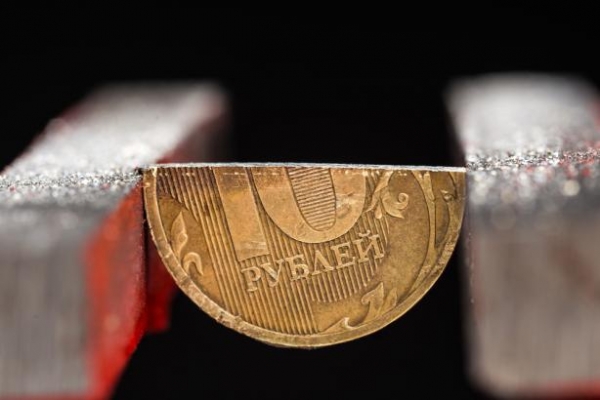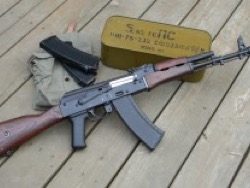
<dl class=”media image”>Photo: Ruslan Krivobok/RIA Novosti</dl>
<big>+</big>T<small>-</small>
Every year Russia is becoming more and more militarized country — and it’s no wonder that in the areas connected with military Affairs, the authorities are looking for evidence of their own success. And since, notwithstanding the annexation of Crimea and the war against terrorism in Syria, the economy crisis continues, the domestic elites and then seeks to show that her “power” orientation, can exert a positive — and significant — results. One of the proofs of this are considered record levels of exports of Russian arms, military technology and equipment, recorded at the end of 2015.
At the end of March Putin, speaking in Nizhny Novgorod at the meeting of the Commission on military-technical cooperation with foreign States reported that the supply of military products abroad in the past year reached $14.5 billion, and the year the portfolio of orders for Russian weapons has increased by more than $26.0 billion jump (thus entering a post-Soviet high). Russia, as the President said, holds the second place in the world on this indicator (controlling about a quarter of the world arms market).
Of course, any growth, especially in such a high-tech economy, taking place in conditions of severe market competition, can not be regarded as a positive trend. The problem, however, is that the build-up of military supplies, as it seems to me, cannot become the tool that can bring the Russian economy from the crisis or significantly slow the growth of those challenges it is facing today.
First of all, the extent of this business in the context of both the overall state of the Russian export and export flows from other countries. In 2015, even despite the sharp decline of Russian exports, it was $343,4 billion; therefore, our defense industry have provided only 4.2% of exports (energy commodities and metals have continued to 73.5% of foreign supplies). Therefore, no significant “structural shift” in this area has not occurred. In addition, if you look at our neighbors, you may notice that they achieve comparable results in far less complex areas. So, for example, China year on year, ahead of Russia’s arms exports with their… children’s toys having brought them last year by more than $20 billion, and if to recall the amount of orders for Russian military equipment ($56 billion), is generally in line with last year’s sales abroad Chinese shoes ($53,6 billion). It is obvious that the international arms market is rather limited (he is now a little less than $60 billion a year), and because any successes achieved in its development, is not able to radically change the situation in Russian foreign trade.
However, more important seem to be two other circumstances.
On the one hand, the export of weapons is only a small part of its production in the world (SIPRI filed in 2015 in the world reached $401 billion [excluding China]). In the realm of production unambiguous leadership is for the United States: they produce weapons at $218 billion, while Russia is only $40.8 billion At the same time we should not overestimate the significance of the “volume indicators”: the margin in the production of arms is not too large, this is not oil. In the U.S. the company’s defense sector have profitability at the level of 9-14%; in Russia, for example, it reaches 30%, however when compared with the cost of oil at $3-7 per barrel and even the current price of $45 per barrel, the difference is obvious: the profit of the military-industrial complex to save the Russian economy.
There is another aspect of the problem. If in the USA or Europe the military orders delivered to companies working not only in the field of the defence industry (at Boeing on the Pentagon’s orders accounted for 34% of revenue that EADS to the needs of European and American military — a total of 21%), in Russia the state defence order perform a wholly state-owned company, wholly focused on military products. Consequently, the profit they receive, and those government injections made into the defence sector, is almost under no circumstances does not enrich the civilian sector and therefore do not provide an economic multiplier. The budget spends, collects taxes, provides for the salaries of officials and workers, but additional growth is not generated. Over budget, no defense enterprises.
On the other hand, modern weapons that already does not provide “push” to the economy and technological development, which it gave in former times. We remember that military technology has led, for example, to the creation and use of microwave ovens, and believe (with a lesser degree of thoroughness) that the Internet was formed in his time on the technology platform, designed with military purposes. However, even the world wide web has developed in a purely civilian environment — as mobile communications, modern optics, and the liquid crystal panel, and new materials that are now used for the production of weapons and equipment. Era, during which investments in the defense industry turned the technological breakthroughs that are long gone. As perfectly shown in the famous work of John Elik and his colleagues, the 1980s were the last decade during which there was a noticeable net transfer of military technologies to the civilian sector [Alic, John, et al. Beyond Spinoff: Military and Commercial Technologies in a Changing World, Cambridge (Ma.): Harvard Business School Press, 1992]; the 1990s differed on this “front” a strange lull, and since the 2000s the flow completely turned around in the opposite direction. And therefore to present our successes in the military sphere as a prerequisite for the modernization of the Russian economy, I would not.
Finally, you should make another important observation. Yes, Russia has increased export of weapons, but it is not always clear in his directions. We have put Syria arms worth more than $9 billion over the last ten years, then they themselves got there in military action, and now comes news that Russia will provide Syria post-war reconstruction and $1 billion. in other words, will try to fix the damage to its own weapons. I’m not talking about an even greater achievement — the sale of $4.5 billion for six years of weapons and military equipment to Azerbaijan, which now has been successful in battles with the strategic ally of Russia in Transcaucasia and our partner in the Eurasian Union Armenia. It is finally to remember that 39% of Russian arms exports go to India, and another 11% in Vietnam, that is in state far from clear friendly “our everything” — China. And how much more Russia will have to “disentangle” its own success, time will tell.
It is quite clear that the government welcomed the increasing arms exports, to a large extent, this confirms the success of its economic policy, focused on the patchwork of state corporations and the military lobby. However, it may be that all these successes are nothing more than the attempt to bring up the GDP by investing in previously collected taxes that will never give economic effect. Of course, the operation in Syria showed that Russian weapons could change the picture of the war (especially if we are talking about aviation, “working” on the territory where there are no defense systems). However, it is likely that the same effect on the economy of the Russian military-industrial complex will not have — for the above reasons and more.








